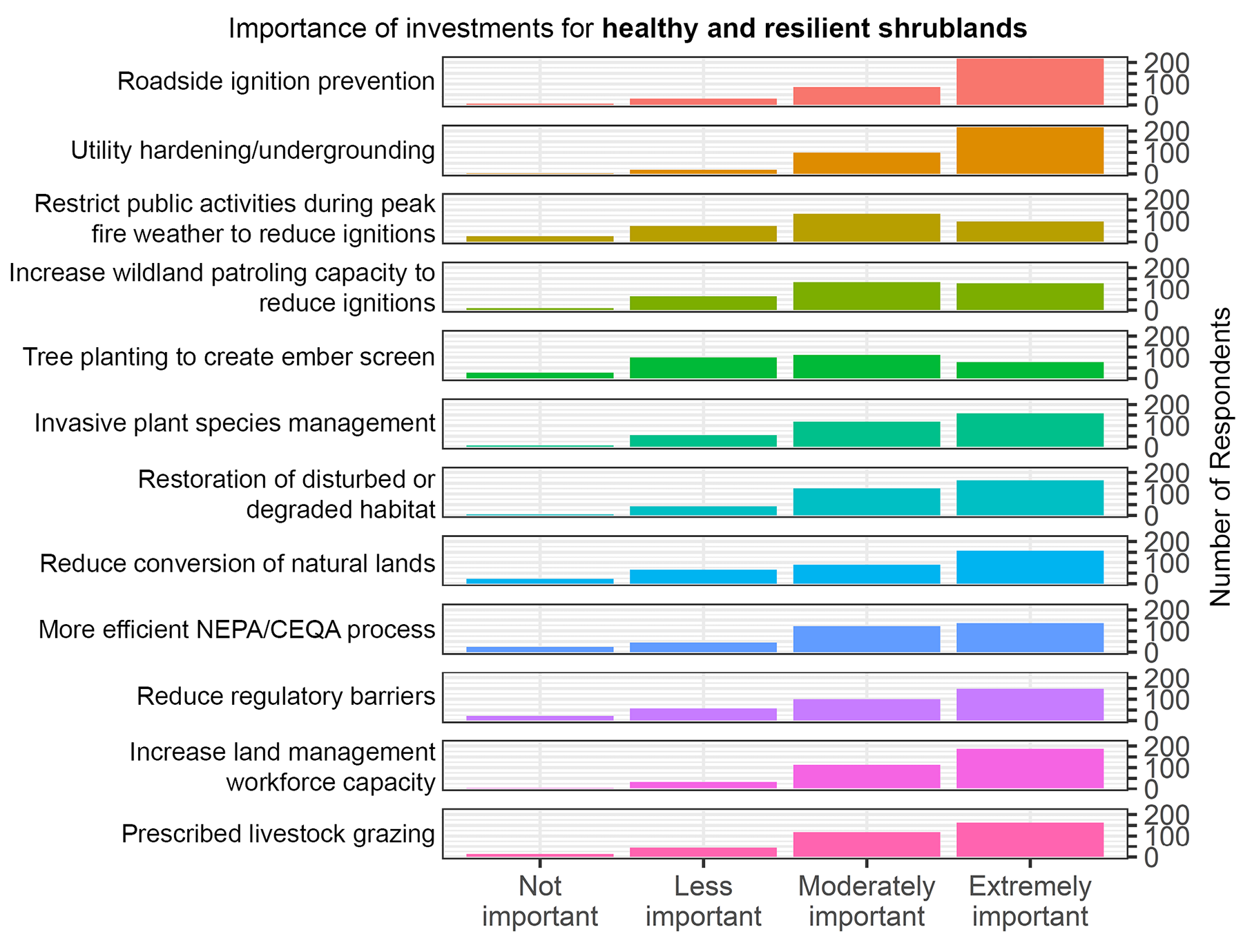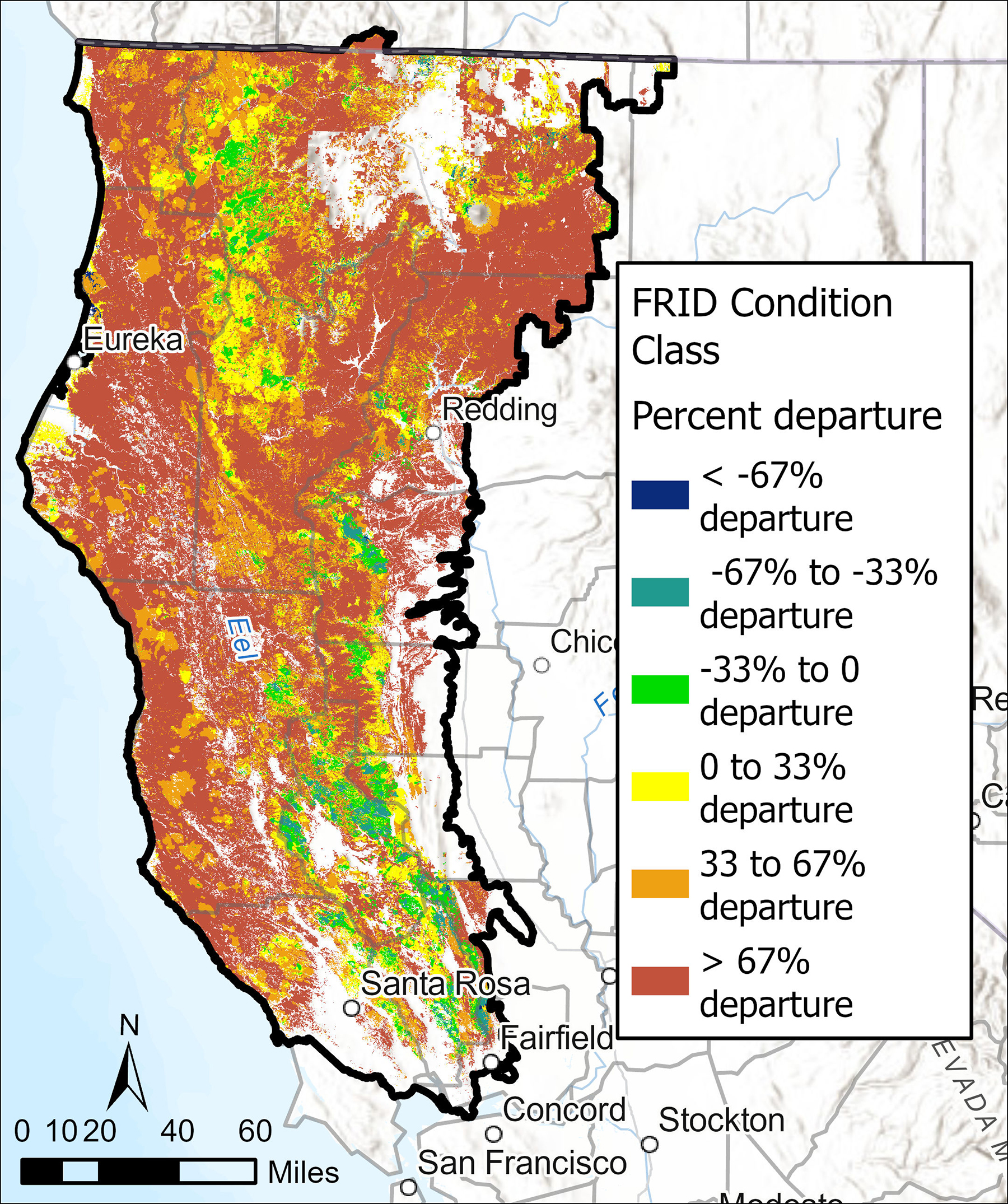Northern California Regional Profile
HEALTHY & RESILIENT GRASSLANDS & SHRUBLANDS

photo credit: Jesse Pluim, Bureau of Land Management
Overview
Grassland and shrubland ecosystems are also an important component of the Northern California landscape, especially in the interior Northern Sacramento Valley region where ranching and agriculture are primary industries. However, as a result of agriculture and other human activities, a lot of grasslands have been reduced to a few invasive species, such as medusahead, yellow starthistle, and goatgrass. These invasive plants provide little nutritional value for livestock and grazing wildlife. Controlled burning is one of the most efficient and ecologically-beneficial ways to eliminate these invasive annual species and encourage the growth of native grass species. However, to be effective, burns must be carefully timed to occur after combustible fuel loads are sufficient and prior to seeds maturing and dispersing. This typically happens in late spring, but most prescribed burning is restricted to winter and early spring due to fire hazard and air quality regulations, resulting in limited opportunities to restore native grasslands.
Chaparral is another important ecosystem in Northern California that provides habitat for many species of wildlife and other ecosystem services, including reducing soil erosion and sequestering and storing carbon. The importance of chaparral ecosystems is often overlooked because they do not provide merchantable resources to humans as forests do. Since Euro-American settlement of California, there has been a misconception that chaparral represents degraded forest, and it has often been cleared for human development. Many communities and remote homes have been built in chaparral in Northern California, which poses a threat to public safety because this vegetation is highly flammable and burns at high-intensity.
To mitigate wildfire hazard to these communities, it is necessary to create defensible space, which often requires clearing chaparral habitat. Other approaches that are used to reduce fuels and restore ecological health to forests and grasslands, such as mechanical treatments and controlled burning, are also harmful for chaparral habitat. However, management actions that may impair ecological resilience on the treatment site (e.g., strategic fuel breaks), may increase the ecological resilience of the larger landscape by reducing the risk of fire entering the neighboring undisturbed areas and human communities. When managing grasslands and shrublands it is also important to avoid creating gaps and soil disturbance that increase susceptibility to invasion by nonnative annual plants because this can increase wildfire hazard.
Stakeholder Perspectives

Stakeholders responded that the top priority areas of investment for achieving healthy and resilient shrublands were roadside ignition prevention and utility hardening/undergrounding. Increasing land management workforce and actions that restored disturbed or degraded habitat, including managing invasive plant species, were also considered important. Survey respondents rated planting trees to create ember screens and restricting public activities during peak fire weather to be less important than other potential areas of investment for their region.
Resource Conditions


Fire Return Interval Departure (FRID) condition class (top) reflects the magnitude and direction of departure of contemporary fires (data from 1908-2022) from the historical fire return interval on the landscape. A positive FRID value indicates fires are burning less frequently than historical regimes, while negative values indicate fires are burning more frequently than historical regimes. The greater the condition class value, the greater the departure from an area’s historical fire return interval. Much of this region is in a fire deficit, meaning fires are burning less frequently than historical regimes. Cumulative shrub cover loss (bottom) from fires, management, and dieoff is measured as an absolute value. These values range from 0 to 1; values can exceed 1 if multiple disturbances occurred. Significant shrub cover has been lost in areas that have experienced fire in the last 5 years, such as Lake and Napa Counties.
